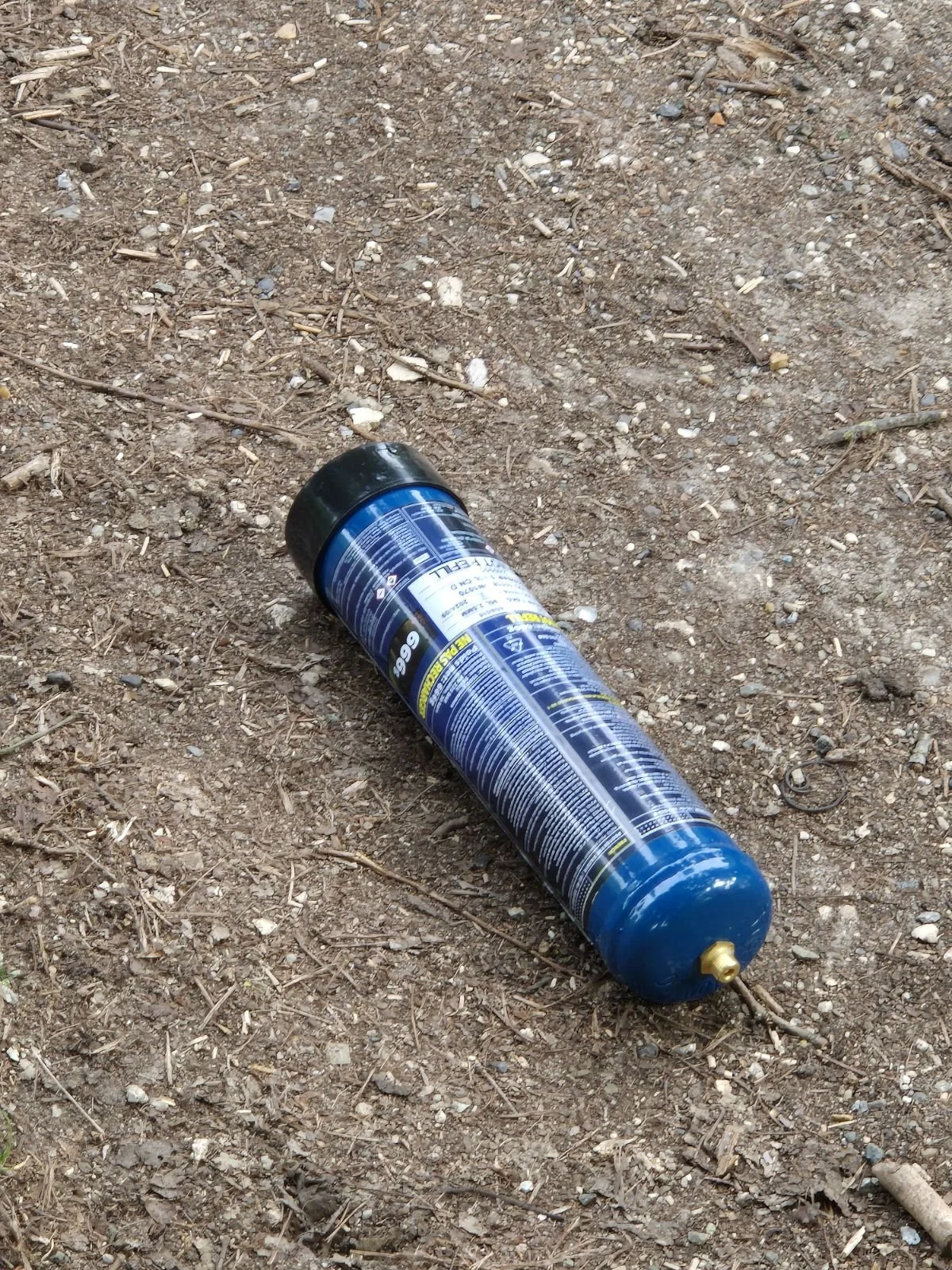Laughing gas (Nitrous Oxide, N2O) explosions cost millions. Who pays the bill?
You may think it is not your problem, but once the facility or transport is on fire, who covers the costs and takes care of the significant risk to human lives? Laughing gas bottles, also known as nitrous oxide cylinders, are found to be used as a recreational drug by young people across Europe, USA and Canada.
During recent years, both public and private recycling companies and waste management organisations have had to increasingly deal with hazardous goods containing nitrous oxide. Many times half empty bottles have gas remaining inside and these go unnoticed in the collection and ground handling operations.The unintended consequences are devastating, hitting profitability and jeopardizing employee safety at work.
Discarded nitrous oxide cylinder lying on the ground.
The Hidden Price of Nitrous Oxide in Waste Management
21st February 2025 Radio France reported that the damage from exploding nitrous oxide bottles costs up to 20 Million Euros per year for waste management facilities because of the damage to their incinerator owens.*
Related news has been reported from Sweden, where Stockholm Exergi, one of the main operators in the Swedish capital area, sent out a press release with their CEO Anders Egelrud commenting that the laughing gas bottle related risks to their facilities are up to 100 Million SEK annually.**
Similarly, in other countries – as early as 2023, exploding nitrous oxide cylinders in the Netherlands caused €65 million in damages.***
In addition to these challenges at waste management and energy company facilities, nitrous oxide has also caused car fires and facility blazes in traffic and sorting areas—before even reaching the final hazardous goods handling stations.****
While many organisations in Europe refer to the EU’s Extended Producer Responsibility (EPR) guidelines, these offer little help when dealing with explosions, fires and costly damages. In theory, producers should be held accountable, but in practice, when the vast majority of nitrous oxide canisters are imported from Asia through online shops, traceability is insufficient to recover the costs incurred.
Ready to tackle your N2O challenges today?
Is your organisation exposed to the risk with nitrous oxide canisters? Contact us to discuss proven ways to proactively manage the threat and make your operations safer.

